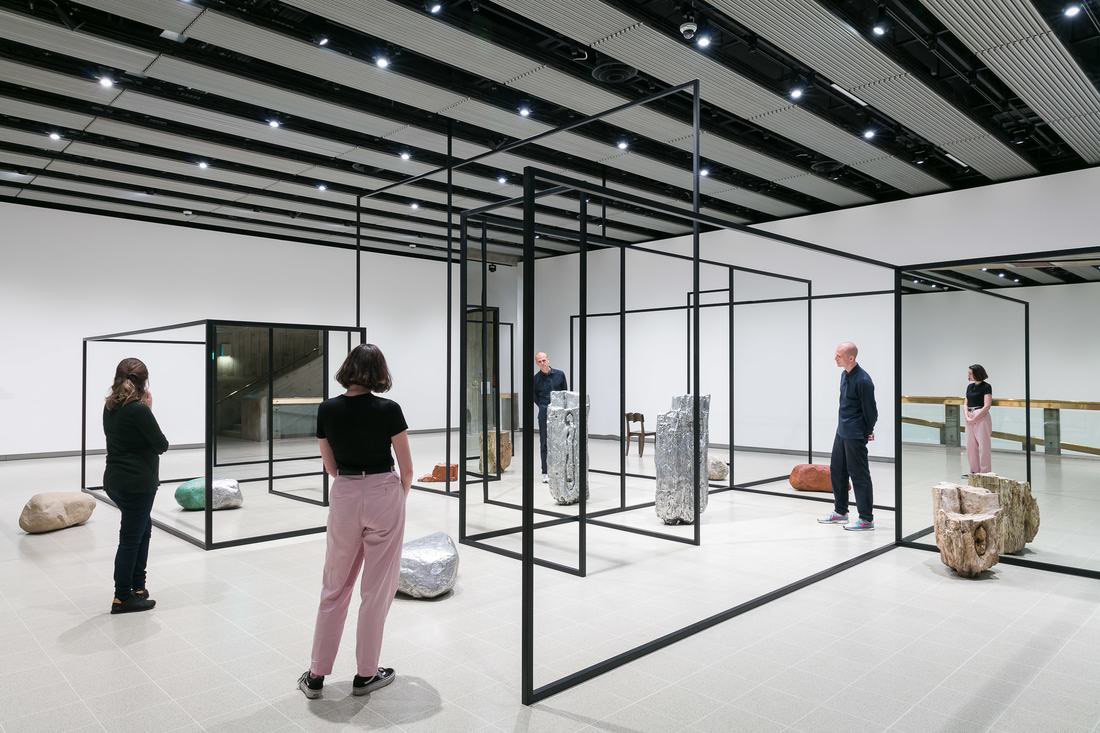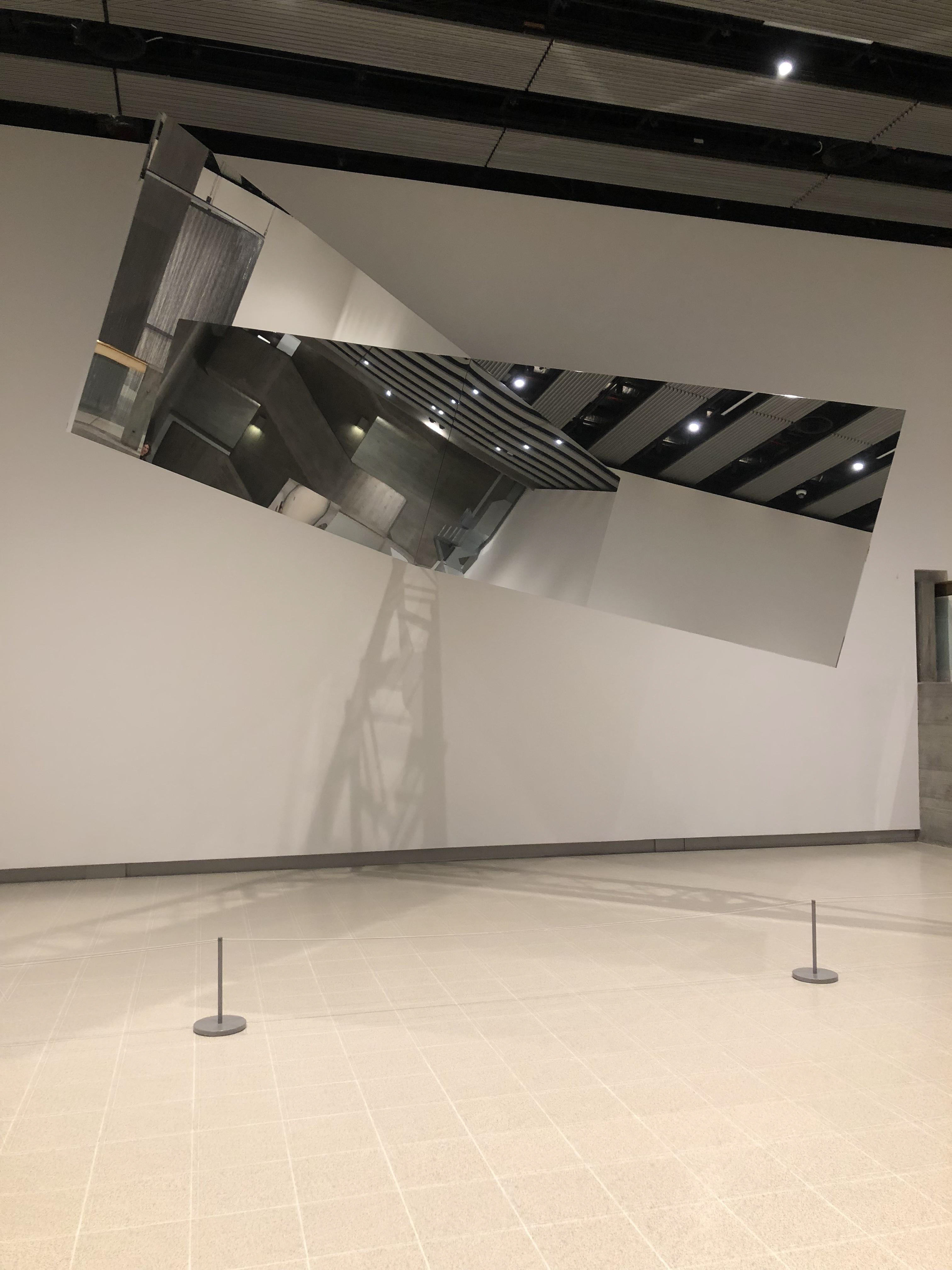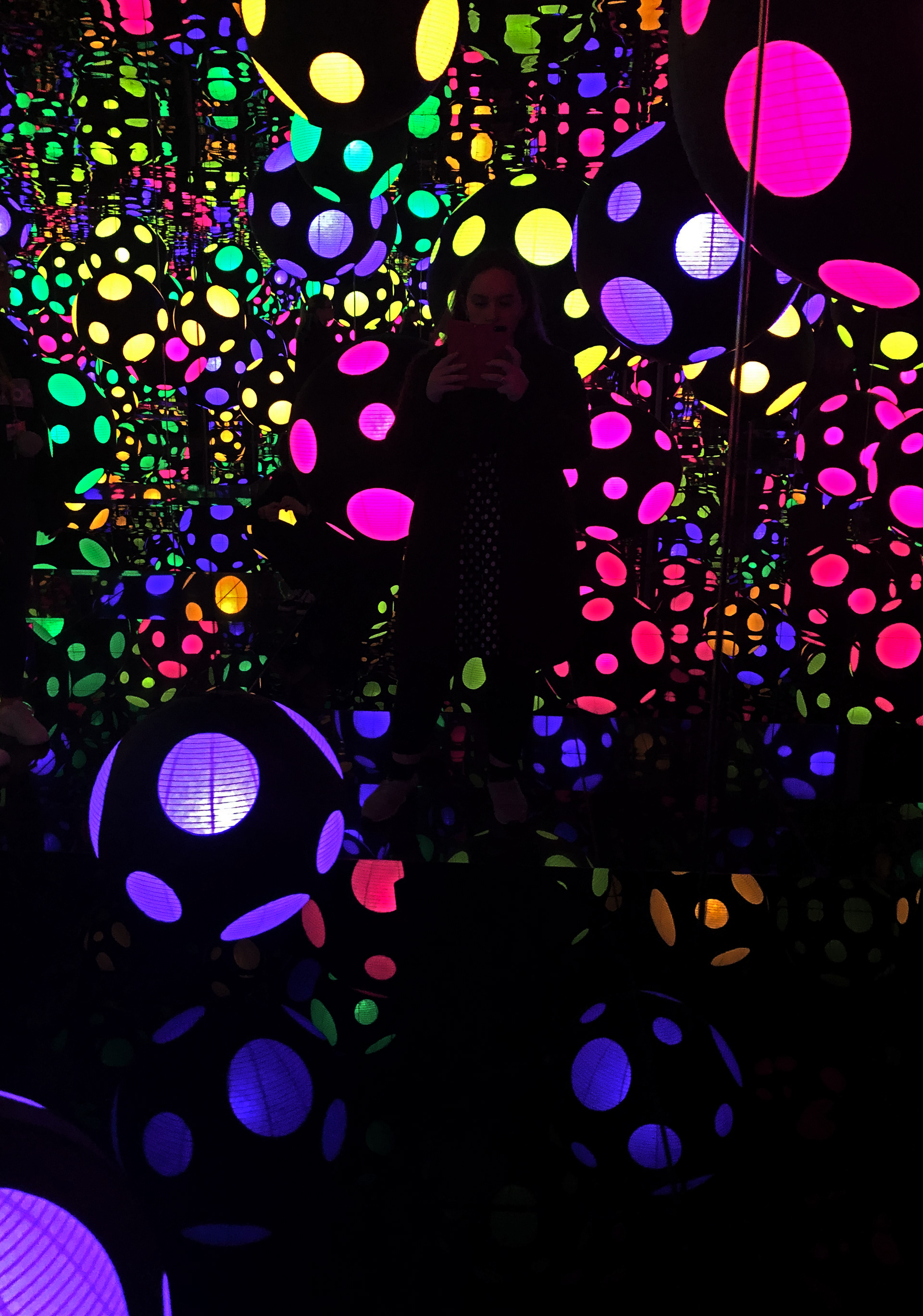Reviewing the Review:
Space Shifters
Space Shifters contributed to the development of my art practice. Allowing myself to become immersed within the works of Kapoor, Wilson, Kwade and Eversley, acted as the catalyst to my exploration with space. Space was the prominent feature of the exhibition. Realised in varying ways, with the more blatant placement of objects within a room, but also through the utilisation of material. The transparency of Eversley’s, Untitled (1971), allowed me to travel visually through the parabolic lens of violet, amber and blue. Revealing the space behind the piece. Whereas, Kwade’s, WeltenLinie, emphasised illusion and trickery through visual understanding, using mirrors. Kwade utilises double-sided mirrors and placed objects that achieve an element of surprise as a result from walking through her maze. (Alicjawade.com). Mirrors were utilised within the exhibition as a contribution to expanding what we see. Hein’s rotating mirror expanded and revealed elements of the surrounding space that may not be visible from walking around the exhibition. The inclusion of audience is a contributing factor that artists consider when using mirrors within their art. When I have used mirrors or any reflective surface within my artwork at the beginning of the academic year, I was constantly receiving feedback regarding the reflection of others seeing themselves seeing. This effectively, made me consider my use of mirrors. When using materials like copper and aluminium, I began to paint the surrounding shadows I could see within the material as opposed to painting pictorial images onto the sheets. Similarly, with using mirrors, I began to focus on the surroundings reflections rather than the reflections of the audience. The frustration with hearing feedback relating to the audience seeing their face within the material began when that was not the initial aim for my art. In a sense, the ‘narcissistic’ illusion of the reflective materials began to surface, and It deterred my interest away from the material.
Yayoi Kusama exhibited at the Hayward Gallery but that is not the work I would like to discuss in relation to mirrors. Her exhibition at the Victoria Miro Gallery, London (2018) housed one of her infamous mirror installations. I had never encountered an artwork quite like it before. The slight uneasiness was present whilst viewing the piece, as felt when wandering through Kwade’s, WeltenLinie, at the Hayward Gallery. This feeling was evoked from not knowing where to walk. Especially within Kusama’s piece, the darkness of the surroundings, congestion of the spherical masses and intensity of the coloured dots, felt heavy. Somewhat of a distraction and eerily resulting in a claustrophobic scenario, yet incredibly effective. The limitation of viewing only allowed a minute observing time before the next rotation of visitors, but it was enough. Kusama’s use of mirrors is significantly different in comparison to Hein, Kapoor and Kwade. Her utilisation allows for a small, claustrophobic space to appear endless and expansive. This technique is caused by having multiple mirrors facing each other from opposite sides of the room. I experimented using a similar technique within the second semester of the second year, on a smaller scale but by the time I reached the final year of my studies, the mirrors were a catalyst for my exploration but were quickly dismissed when my fascination of lights and geometric forms started to develop.
Although my practice deterred away from the mirror, the exhibition, as stated previously, aided my exploration into space and the contribution of the beholder. Viewing artworks by Kusama, Hein and Kwade allowed me to consider what it is the beholder brings to an artwork in relation to experience and knowledge.
I have had ambitions to create large installations that incorporate multi sensory mechanisms, not just the apparent five sense triggers but to change the way the beholder views my work. Somewhat similar to Eliasson’s consideration of the perceptual understandings of the human condition, evident within his artwork, Room For One Colour (1997) and many more. Therefore, I embarked on the journey of completely stripping my work back to the bare minimum. Only allowing simple shapes, lights and resin to do the conversing. I am typically too distracted by heavily painted, pictorial artworks. I am far more interested in creating work that allows me to think and develop an understanding of the artwork, without being too heavily directed on a narrative. My artwork has incorporated the element of illusion, learnt by Kwade and Kusama, by tricking the eye. I began to create a series entitled, Geometric Irradiation (2019). The artworks presented are painted white canvas frames, illuminated by motion sensor lights. A conscious decision was made in relation to the colour choice of the frames as I wanted to achieve a Doug Wheeler or James Turrell dispersal of shaped light. The frames were painted white in response to the surroundings my artworks were presented. This created the effect that the frames appeared ‘invisible’ from afar, but the shadows and the lighting emphasised the rigidness of the industrially made frames.
My research into the Minimalist period has been heavily applied into my art practice. The impeccable slickness (Meyer, 1969) of the sculptures and the ambiguity of the forms allowed me to create my own narrative with becoming aesthetically pleased whilst viewing the art and this is how I felt when viewing Space Shifters.

Welten Linie, Alicja Kwade. https://www.southbankcentre.co.uk/venues/hayward-gallery/past-exhibitions/space-shifters

Untitled, Jeppe Hein
